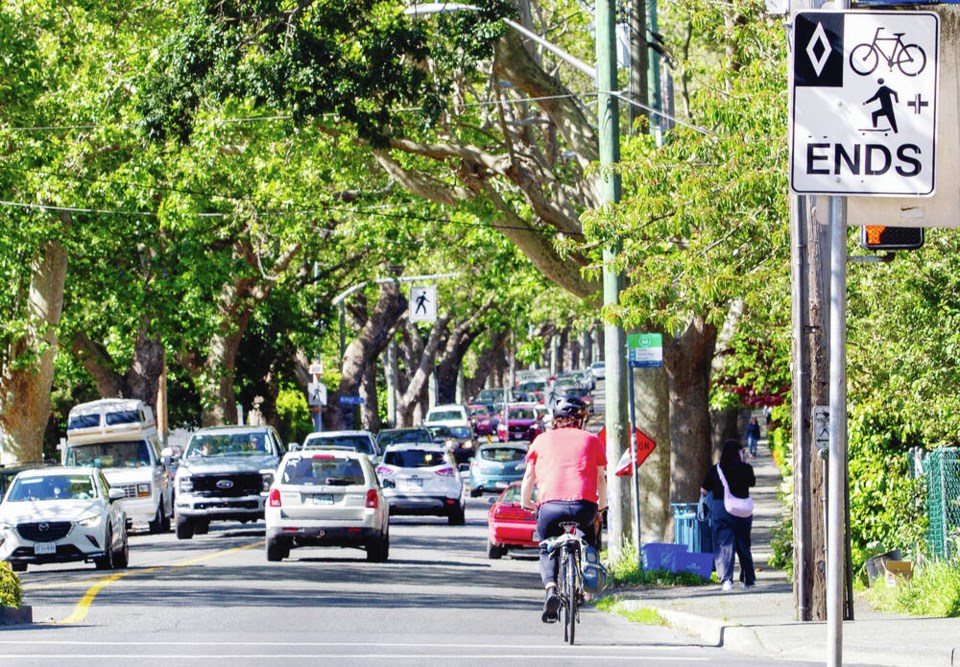This is one of those conundrums where I have yet to make up my mind. But I thought hard this week about the pros and cons of a particular safety issue which is very common for some road users yet equally maddening for others. Should cyclists have to stop at stop signs?
I was piqued by this issue when I discovered a 2010 study from the University of California School of Public Health by Jason Meggs which showed that, in Idaho, cyclists’ injuries were reduced by 14.5% the year after state authorities removed the requirement to come to a complete stop for a stop sign. The author’s conclusion is pretty blunt: “There’s no single measure as quick and as cost effective for increased and safer cycling, than to relax stopping rules for bicyclists”.
In many ways I can see it. Why does a cyclist need to completely stop, remove one or both feet from the pedals, which often are clipped in, put a foot on the ground then remount and start again from zero km/h only to repeat the process a few hundred metres up the road?
Cycling by its very nature affords the rider a hugely wider field of view than someone inside a car. By not being enclosed in steel and glass, they can also hear approaching dangers much easier than a vehicle driver — provided they are not using the Darwinian tactic of riding with headphones on full blast.
On quiet streets where there is little to no cross traffic anyway, what’s the point? Pundits arguing for a “slow — not stop” rule believe that pedalling from zero actually increases the amount of time a vulnerable cyclist is in the intersection, making things more dangerous.
I could also buy the argument that time spent fiddling to put your feet back into finicky pedal clips is time spent away from concentrating on traffic and the environment around you.
This past summer in Winnipeg, cycling advocates publicly rallied for the province to adopt the “Idaho stop” rule to reduce potential danger time spent negotiating through intersections.
The main problem in this rule change, as I see it, would be human nature. Tell cyclists they no longer need to stop at a stop sign and more than a few will be cruising through at just under warp speed, even though the intention of the Idaho law is that a cyclist slow right down, have a proper look around and proceed though the intersection with caution — as all road users should do.
The other problem is the slippery slope. When you don’t need to heed stop signs, why bother for red lights, or no left turn signs? Many people writing to me complain of the mayhem and the constant barrage of more and more “vulnerable user” devices appearing on our roads, but also the steady decline in respect for road rules generally.
Right now, the law in B.C. compels a cyclist to stop — a complete cessation of movement. But the rub for me is that if I had a loonie for every cyclist I see not stopping at a stop sign, I’d be rich. So do we need to start accepting how things are in the actual world particularly if Idaho shows that cycling injuries are reduced?
Maybe the answer is to set a speed limit of say 5 km/h for a cyclist going through a stop sign. But even using a hard number creates subjectivity and would be difficult to enforce.
As cycling infrastructure here expands at a pace I’d actually label as frenetic, the “no stop” stop rule is a good question.
Glove Box: The senseless tragedy around the death of good samaritan Patrick Hare near Qualicum last month serves as a timely reminder about the ongoing dangers of after-vehicle-crash scenes, something which every motorist will experience in their driving lives.
Hare stopped to assist a woman in a minivan who had hit a power pole on Highway 19A around 2:30 AM, when a third vehicle driven by a 29-year-old man from Coombs collided with them, killing Hare. That man is now facing six criminal charges related to impaired driving.
Post crash scenes can be one of the most dangerous conditions other drivers and would-be rescuers can face until first responders arrive on scene. I wrote back in June about what to do at crash sites. Protecting yourself is a top priority. If it’s beyond your means to physically help, just be a good witness.
Even though there’s no legal requirement for anyone to stop, this 80 year old man didn’t hesitate. I for one am thankful for the Patrick Hares of the world.




